While still relatively obscure when compared to the likes of Dimetrodon, which is arguably the most famous Permian period animal by far, Scutosaurus has had a fair bit of attention to bring it into the limelight, which is still more then most animals from the Permian period. Perhaps its most notable appearance was in BBC’s 2005 Walking with Monsters, which is what actually introduced me to it, but it also appeared in BBC’s TV series Primeval, with the most recent appearance in the 2023 Netflix Life on our Planet series. It’s also received a handful of toys over the years.
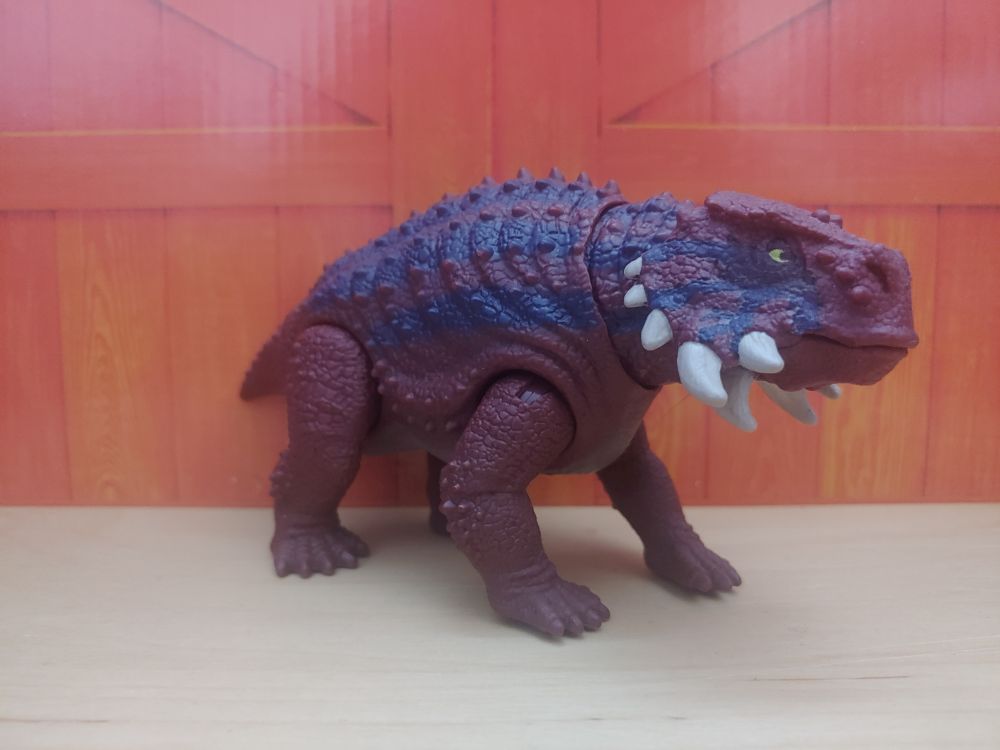
Perhaps the first notable toy was from the Kenner/Hasbro 1997 The Lost World Jurassic Park Series 1 Dino Tracker Adventure set (although it was a repaint of the canceled 1994 Jurassic Park Series 2 one, alongside the Estemmenosuchus it was packed with), although the Starlux figure predates it nearly a decade earlier. There has been very few figures of this fascinating pareiasaur since then (let alone any of its relatives), with the 2005 COG Ltd Dino Horizons, the 2009 Safari Ltd, and the 2023 Wild Past (and Kotlassia), and then lastly Mattel’s, in 2020, 2023, and this year. The first of these is the 2020 Savage Strike figure, under the Primal Attack line of toys (which simultaneously released alongside the Camp Cretaceous branded toys later in the year). There was a retool of this figure back in 2023 as part of the Jurassic Park ’93 Classic line that debuted during the 30th anniversary of Jurassic Park, with the action feature removed and painted up like the canceled 1994 Jurassic Park Series 2 toy. The last is the most recent, released earlier this year, and is part of the Hammond Collection with a brand new sculpt, and more articulation then the previous offerings. This review will be focusing on the first of these, the 2020 Savage Strike figure.
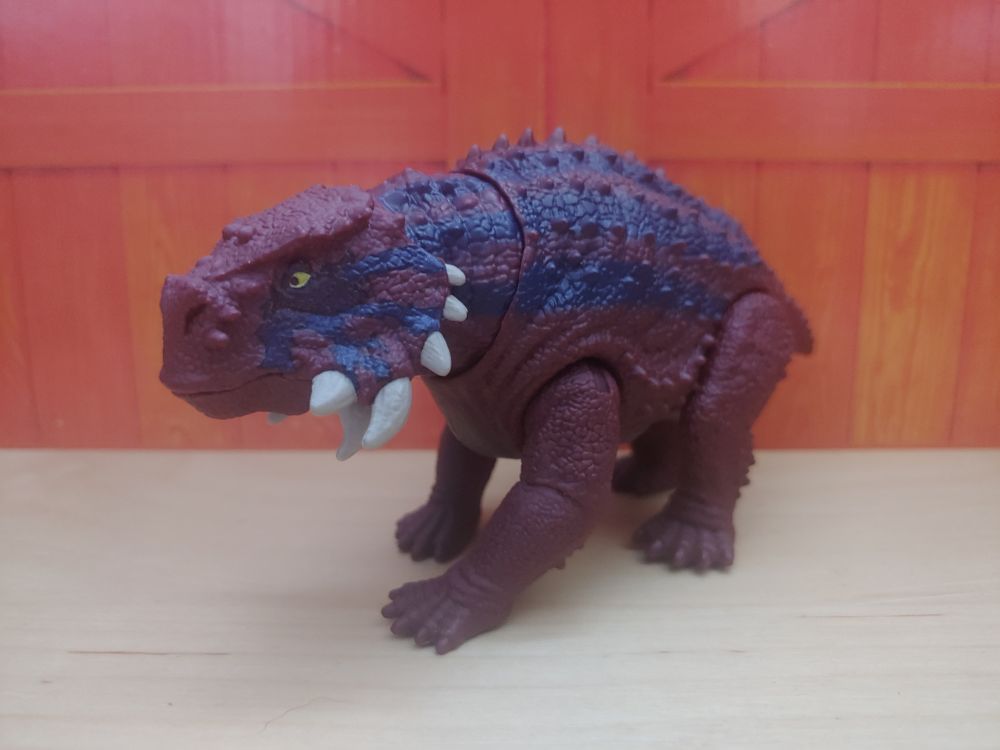
Scutosaurus was first named and described in 1917 as “Pariasaurus karpinskyi“, in a paper by David Meredith Seares Watson. Fossils of Scutosaurus were initially found during an expedition led by Vladimir Prokhorovich Amalitskii and his wife Anne from 1899 until 1914. Further material was described as three species of “Pareiosaurus” by Amalitskii posthumously in 1922. Both Pariasaurus and Pareiosaurus are misspellings of the genus name Pareiasaurus. It wasn’t until 1930 that this material would be assigned under Scutosaurus, thanks to paleontologist Aleksandra Paulinovna Anna Hartmann-Weinberg, with the species name “karpinskyi“, eventually revised as “karpinskii” in 1937. That convoluted bit of paleontological history aside, Scutosaurus has numerous well preserved skeletons, dis-articulated remains, and even osteoderms.
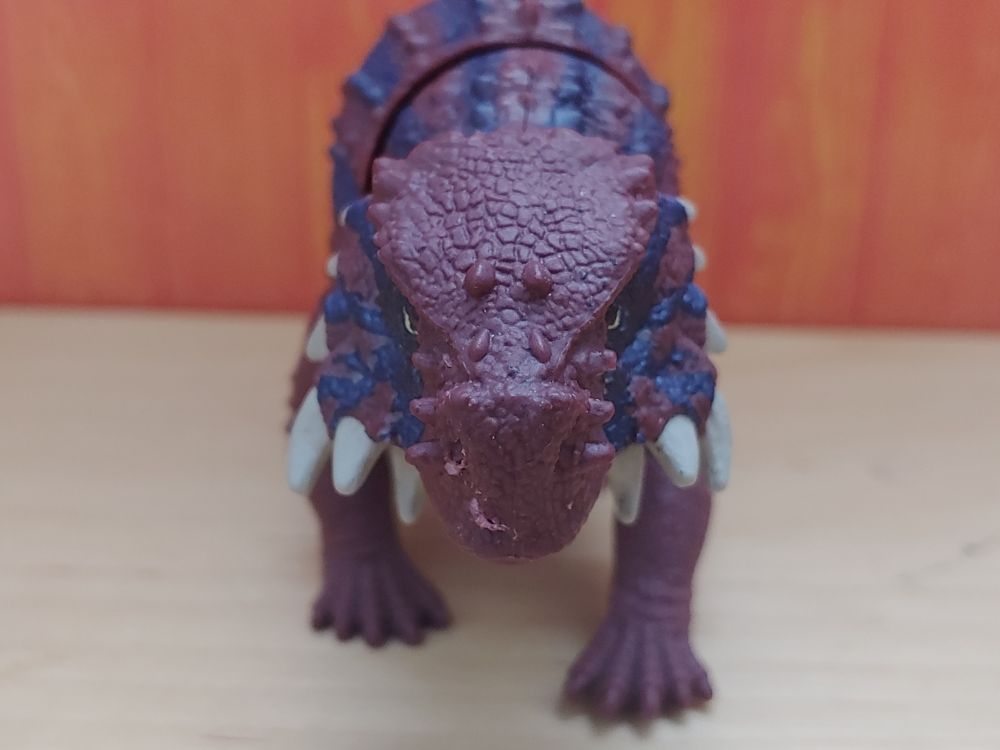
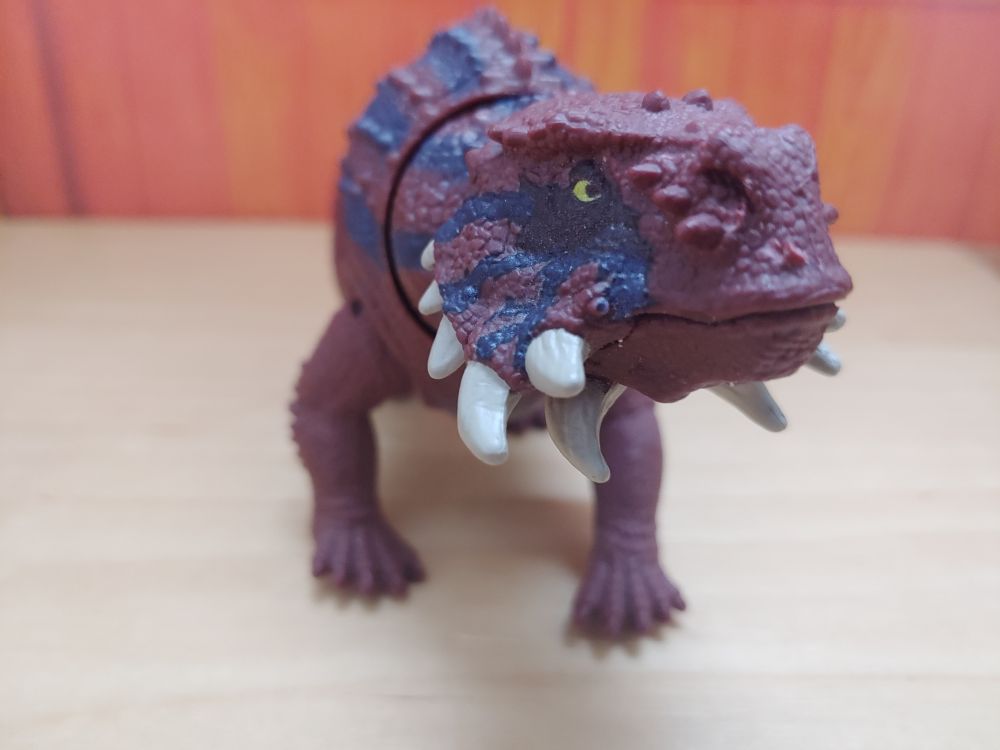
As mentioned earlier, it was a pareiasaur, a type of reptile, and lived in what is now the Arkhangelsk Oblast of European Russia (or western Russia), during the Lopingian, or late Permian period, 259–252 ma. It would have lived alongside the dreadful gorgonopsian Inostrancevia, the dicnyodont Vivaxosaurus, the cynodont Dvinia, and various other tetrapods including Kotlassia, and Dvinosaurus. The environment would have been arid, with the exception of flooding during a wet season. Flora includes peltaspermaceaens or “seed ferns” such as the genus Tatarina, as well as ginkgophytes, lepidophytes, mosses, and ferns.
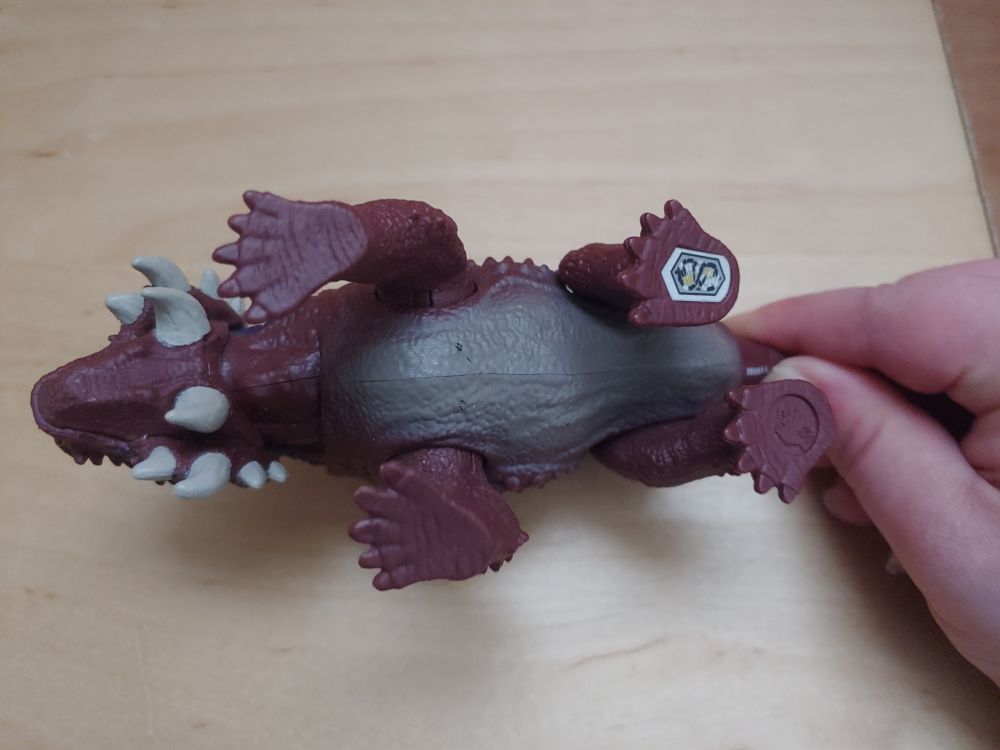
Focusing on the figure, the body gets the general anatomy of the animal correct more or less, including its general proportions and limb posture, such as the large robust sprawling forelimbs, barrel shaped body, and tiny tail. The forelimbs could probably be a tad bit bigger then the hindlimbs proportionally. The torso could also be a bit longer as well. Each limb has the correct number of digits, being five. Only the head deviates with an exaggerated number of bosses or spikes on the cheeks, but the general shape of the skull is otherwise close, being boxy, and short. The lower jaw also correctly contains a pair of spikes. The body has been sculpted with rows of osteoderms. A 2021 paper by Romano et al reconstructs them in a different manner. I’m not familiar with the history of Scutosaurus reconstructions, or even if there were any osteoderms preserved in situ, and honestly I’m not about to do a deep dive on that for this review. If anyone knows more on this topic, please shed insight in a comment. Moving on, the paint scheme is rather simple. The figure is mostly a maroon color, with some blue stripes across the body and head. The majority of the bosses, or spikes have been painted white, and the belly is painted in this color too. Despite the simplicity of it, I find it rather appealing. The head is on a ball joint, and the limbs can be rotated around. The arms can also be moved up and down (or in and out). The action feature is simple. Moving the tail moves the head side to side. That’s it.
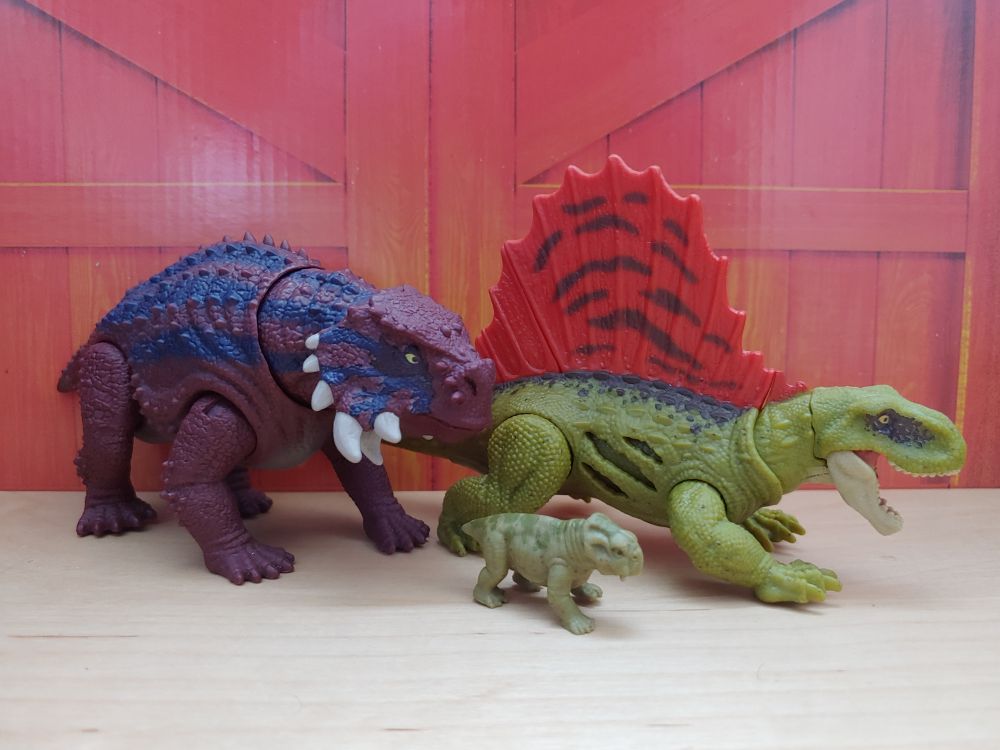
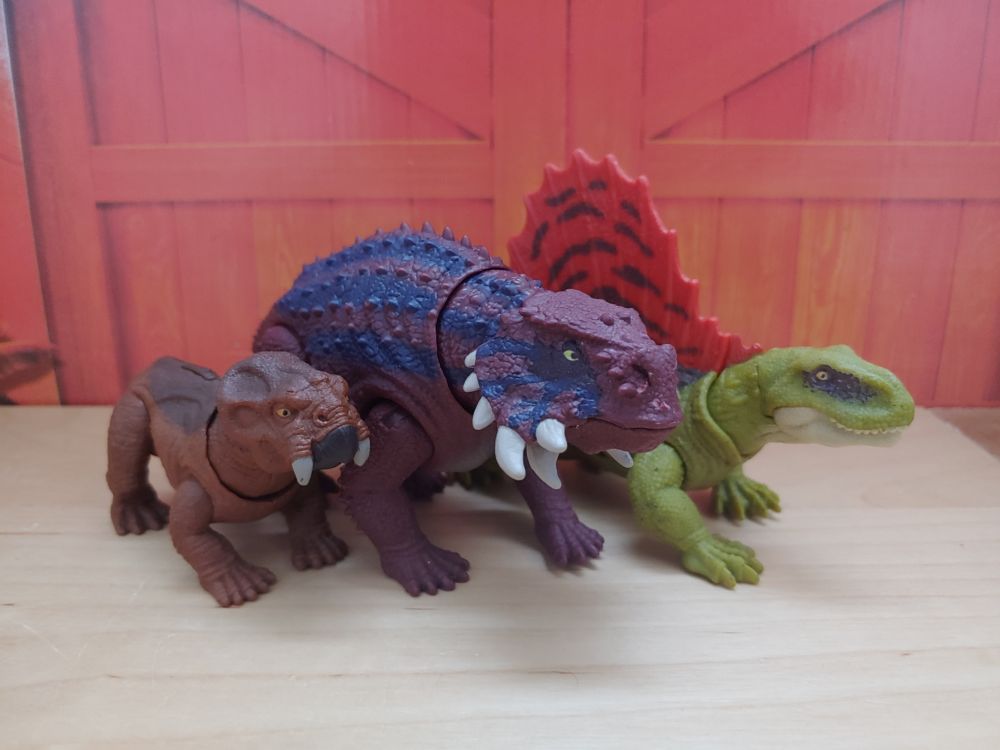
Overall, I find this to be one of the more scientifically informed figures in the line, which can vary rather wildly at times. To this day it’s still one of my absolute favorite figures Mattel has done for their Jurassic World line, despite collecting it from its launch in 2018, and onward. It’s long out of production now, and also suffered from poor distribution, potentially due to the complications of the Covid-19 pandemic, and overstock of 2019’s Savage Strike figures clogging shelves (the purple spitting Dilophosaurus, and others), at least here in the US. Expect to pay a pretty penny for this one, perhaps even more then Kenner’s. Alternatively you could go for the 2023 retool from the ’93 Classic line, or the new Hammond Collection one, albeit with a brand new sculpt. I obtained mine from fellow forum member triceratops83, among many other figures that were hard to find here back then. I’m forever still grateful for his help with this one. Aside from Scutosaurus, Mattel has made a few other figures of Permian period animals, with Dimetrodon, Edaphosaurus, Lystrosaurus, and new for this year’s Rebirth line, its fearsome predator, the Inostrancevia. And one more thing, for a comparison with this figure, the Safari Sctuosaurus, and the Jurassic Park ’93 Classic one, please check out Gwangi’s review of the latter figure, as I provided him some comparison images then.
Disclaimer: links to Ebay and Amazon on the DinoToyBlog are affiliate links, so we make a small commission if you use them. Thanks for supporting us!




Great to finally get all the Mattel Scutosaurus toys on the blog. Someone needs to review the Kenner one now.